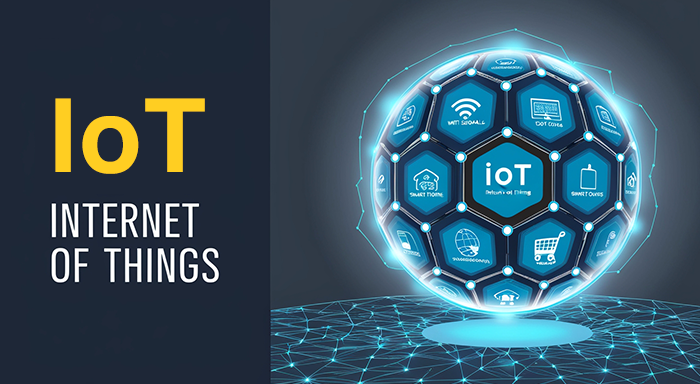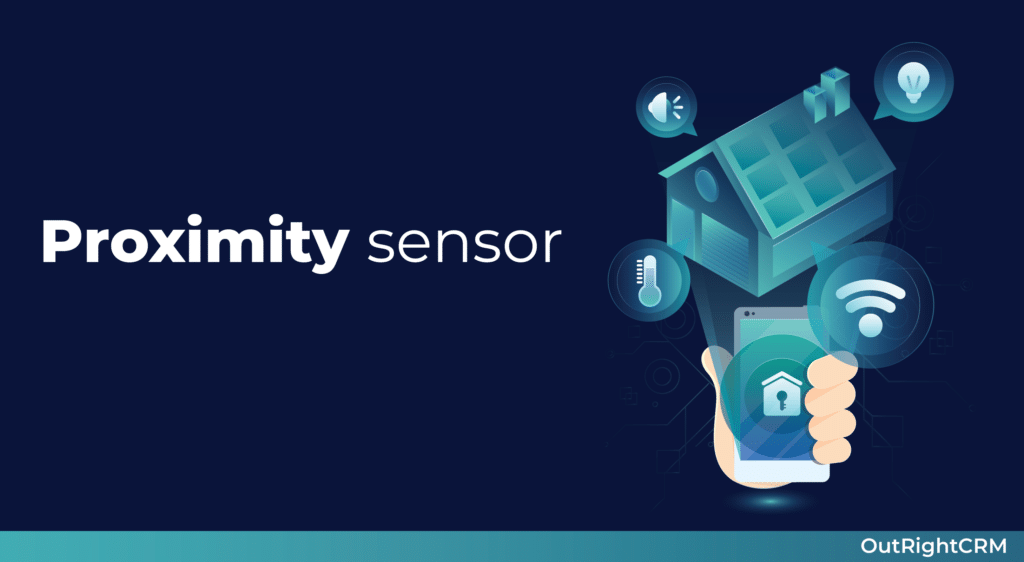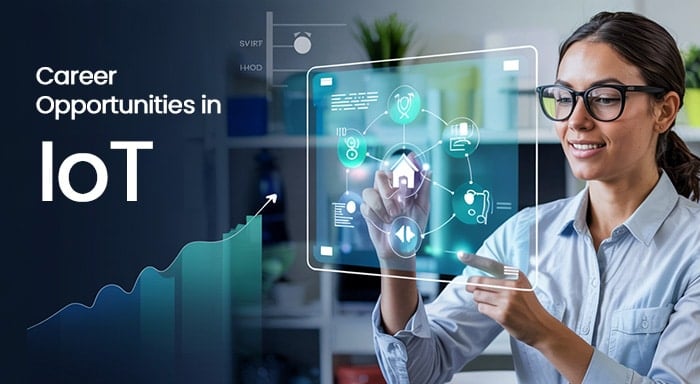Imagine you’re at work and recall that you forgot to turn off your AC. But what if instead of travelling all the way from office to home, you can see your AC status on your smartphone? And perhaps even turn it off. Yes, this is possible. This can be achieved through the Internet of Things (IoT). Earlier, the internet was limited to laptops, desktops, and smartphones. But this has changed now. With IoT, almost all appliances and devices can be connected to the internet and monitored in real-time. Doesn't that sound amazing?
IoT is reshaping the way we live. It helps us get better insight into the working operations around us. Internet of Things (IoT) devices are being used by people all over the world whether they realize it or not. Presently, IoT connects 27 billion physical devices globally. The number is expected to reach approximately 75 billion by 2030. The current market value of IoT devices is $ 1.35 trillion, and it is expected to increase up to $2.72 trillion by 2030. The Internet of Things (IoT) has been around for a few decades and has shown significant growth in such a short period. It is expected to continue growing year-by-year in the foreseeable future.
But what is Internet of Things (IoT)? Let's understand (IoT) and how it is reshaping our lives in a most creative and innovative way.
In this article, we’ll learn about the internet of things (IoT), its brief history, how it works, functions, benefits, real-world applications, and future innovations.
What is IoT?
Internet of Things (IoT) is a network of connected devices that interact with each other to gather data about the working conditions of our environment and share those data with users. The devices are embedded with sensors that play a major role in collecting real-time data and triggering immediate responses or actions.
IoT is a vision that connects all devices with the power of the internet to lessen the burden on humans and improve the quality of life.
IoT in Everyday Life
Have you ever imagined when your alarm goes off, a coffee machine automatically starts brewing your coffee? Or your lights are automatically dimmed to create a full movie theatre vibe? You don’t have to imagine because this already exists. IoT makes all these things possible, transitioning from fiction to reality. IoT-connected devices are also known as “smart objects”. We use these “smart objects” every day to make our lives significantly easier. From wearable devices like smartwatches, fitness trackers and thermostats to complex machines such as digital locks, medical equipment, traffic lights, vehicles etc., IoT has deeply integrated into our daily lives. As experts like PedroVazPaulo Business Consultant often highlight, this growing ecosystem of smart technology is reshaping how we interact with the world around us.
We have already seen how IoT has become a part of our everyday lives. Now, let’s dive deeper into the brief history of Internet of Things (IoT) to familiarize ourselves with its origin.
History of (IoT)
It is always good to know a little history behind things. How did we reach the time where IoT has achieved explosive growth? Let's take a journey to the past:
1982 – At Carnegie Mellon University, first IoT-like device, a Coca-Cola vending machine was connected to the university network to monitor drink stocks and temperature.
1990s – Early versions of internet-connected devices and wireless networks started developing. For example, John Romkey’s toaster was connected to the internet using TCP/IP.
1999 – Kevin Ashton, a British technologist coined the term “Internet of Things”. Using RFID, he explained the concept of connecting physical objects to the internet.
2000s – LG launched its first smart refrigerator. It was equipped with smart functions, connected to the internet, and could detect missing items in the fridge.
2007 – Launch of first iPhone as IoT hub. It Transformed the concept of smartphones.
2014 – Voice-controlled devices like Amazon Echo were released. Popularized the use of smart home assistants such as Alexa.
2018 – Early high-speed 5G networks were launched, enhancing IoT operations.
2023 – Explosive growth in number of IoT connected devices and projected to reach 30 billion by 2030.
We saw the history behind the evolution of IoT and learnt some key events that shaped IoT landscapes. Now it's time to get into the technologies that make IoT possible.
Core Components of IoT Architecture
There are several components of IoT that enable the devices to function smoothly. Let us look at Building Blocks of IoT:
- Sensors & Actuators IoT Sensors are embedded in devices. They are used to collect data about changes in the environment such as temperature, humidity, pressure, light, motion, and proximity. Actuators are devices that cause physical changes like turning on & off motor or lights, opening & closing a door.
- Connectivity: Data collected by sensors & actuators is sent to the central hub using Communication protocols in IoT technologies like Wi-Fi, Bluetooth, Zigbee, and cellular networks.
- Cloud: Cloud computing platforms provide the infrastructure and tools needed to store, process and analyze IoT-generated data. AI-powered software and applications convert this data into meaningful information.
- Analytics: The large amount of data collected by IoT is further processed through IoT Data Visualizer and analyzed using advanced analytics tools like machine learning and predictive analysis.
- User Interface: Users interact with IoT devices with the help of websites or applications. Internet of Things (IoT) objects grant access to users to monitor and receive alerts about their surroundings.
Benefits of IoT (Internet of Things) Technology
IoT benefits us in unimaginable ways. From turning on our air conditioner to automating complex machines. Here's some key benefits of Internet of Things:
- Improved Quality of Life
Smart homes and smart objects provide comfort and convenience. They automate routine tasks and make it easier to perform everyday chores. Wearable smart devices like smartwatches, fitness trackers, and smart clothing help monitor our health, ensuring the well-being of humans.
- Reduced Costs
Through automation process and real-time monitoring, organizations can cut down on manual labor and operational costs. AI-powered algorithms like predictive analysis detect unusual behaviors of machines and send alerts beforehand. This helps reduce expensive repair costs and downtime.
Similarly, in retail, IoT sensors are used to manage inventory. They accurately track stock levels, minimizing overstocking, or understocking. This results in reduced storage costs and limits loss from unsold products.
- Enhanced Customer Experience
Internet of Things (IoT) helps organizations get insights into customer behaviors, transaction history and preferences. This data is used to offer personalized recommendations, custom deals, appropriate immediate responses to customers, etc. It helps companies to provide satisfaction and best experiences to their respective consumers.
- Improved Safety
Safety is the most growing concern among people. Smart devices installed in homes and workplaces can detect potential hazards or accidents and send alerts against danger/risks. IoT devices also trigger appropriate actions during accidents/dangers/mishap to minimize their effects. This ensures personal and property safety and brings peace of mind.
- Increased Automation
IoT automates repetitive tasks that typically require human intervention and are time-consuming. It controls almost all devices and provides real-time monitoring, saving time, and effort. This frees people to focus on more urgent and complex tasks that demand their undivided attention.
- Increased Productivity
The Internet of Things increases productivity by enabling efficient management. It streamlines all processes and operations, collecting real-time data. This ensures a smooth and optimized workflow. With IoT, organizations can function more effectively, focus on strategic initiatives, and reduce costs. This helps drive growth and success.
Real-World Applications of IoT
Let's explore some real-world examples of Internet of Things and how we use it in everyday life:
- Smart Cities: Gathering real-time data, IoT devices in smart cities are used to regulate traffic flow, reduce congestion, and manage parking. Sensors also analyze and collect data on pollution levels, Air Quality Index (AQI) and weather patterns to predict future issues and implement necessary control measures. It also monitors and optimizes energy usage and reduces waste.
- Smart Homes: IoT devices in smart homes automate almost every task. It can brew your coffee when your alarm goes off, open or close the curtains, switch on & off all appliances, adjust lights as per need, and control indoor temperatures to make you feel more comfortable. This also allows improved and accessible security through smart locks and real-time monitoring.
- Agriculture: IoT sensors serve multiple purposes in agriculture, ensuring proper crop management. Humidity sensors are used to collect data on soil temperature, nutrients, and moisture. This allows farmers to get accurate insights on water, pesticides, and fertilizers requirements. This ensures proper crop growth. Smart devices also trigger appropriate action upon sensing the change in the environment. For example, sprinklers automatically start when the soil becomes dry.
- IoT in Healthcare: The Internet of Things (IoT) significantly helps monitor wellness, reducing the risks of serious health issues. Wearables like fitness trackers and smartwatches constantly track heart rate, calories, steps and sleep hours to give personalized health insights. IoT-connected medical equipment also monitors heart rate in real-time and sends alerts/signals to staff upon detecting any slight change or abnormal pattern.
- Industrial Applications: Industrial IoT is often abbreviated as IIoT. Organizations deploy a network of sensors throughout facilities to monitor variables such as temperature and humidity, both of which are critical for the production of sensitive goods. By continuously gathering data, IIoT enables early detection of equipment issues, helping to minimize unexpected downtime and maintain operational efficiency.
IIoT technologies also offer significant improvements in inventory management and supply chain oversight. Real-time tracking ensures that materials and finished goods are accounted for at every stage, reducing loss and streamlining logistics.
- Transportation: The integration of IoT devices is reshaping operational efficiency and oversight in transportation. These technologies, embedded within vehicles, facilitate real-time monitoring of crucial performance metrics such as engine health and tire pressure, enabling predictive maintenance, and minimizing unexpected breakdowns. Connected vehicles also provide insights into fuel consumption patterns, allowing organizations to reduce expenses and advance sustainability initiatives. Moreover, IoT-enabled tracking systems ensure continuous oversight of shipments, safeguarding cargo integrity throughout transit. Collectively, these advancements streamline supply chain management, mitigate losses, and improve delivery reliability.
- Weather Systems Using IoT: IoT sensors are used to collect real-time meteorological data. It analyzes weather patterns, wind speed, humidity, temperature, and issue alerts. It provides useful insights related to farming, traveling, etc.
Challenges and Concerns in IoT
While IoT offers many benefits, it also faces some challenges:
- Security & Privacy Issues: A billion devices are connected to the internet. This makes them vulnerable to potential cyberattacks. Privacy concerns are about how personal information is collected, stored, used, and shared. To ensure the security of data, proper security measures need to be adopted. Encryption, two-factor authentication, strong passwords, and continuous monitoring are essential to prevent the stealing and misuse of data.
- Data Management & Analytics: IoT generates a vast amount of data every day. Managing and analyzing them to extract useful insights can lead to data overload. AI algorithms such as machine learning and predictive analysis can manage data. However, organizations need effective data storage, processing, and analytics solutions to avoid overwhelming data overload.
- Power Management: Many IoT devices are battery powered and need power to function smoothly. Effective power management is necessary to ensure long-lasting operation and ensure optimal performance of smart devices. This is particularly essential in remote or inaccessible locations where traditional power sources are absent.
- Interoperability: It refers to the ability of connected devices or systems to interact and work together. Interoperability poses a major challenge in the IoT landscape. Different manufacturers create different devices which complicate the integration process. It affects compatibility and coordination of connected devices. Interoperability is essential to unlock the full potential of IoT and ensure seamless operations of interconnected devices.
- Scalability: As the number of IoT devices is growing rapidly, it has become essential to manage the increased volume of data and information. Ensuring that devices are effectively managed and easily configured is vital.
How Should Business Approach IoT
The Internet of Things allows businesses to monitor real-time data and gain meaningful insights. These smart devices automate tasks, improve processes, and manage data effectively. Here's how business should approach IoT integration:
- Define Business Goals & Strategy: Clearly define business objectives and issues that you want to address through IoT. Pinpoint your goals, problems to solve and their solutions.
- Select Right Technology: Choose secure devices that are equipped with security measures like encryption and authentication. Use cloud platforms for scalability and ensure proper connectivity.
- Focus on Data and Security: Carefully plan data storage, management and analyzing tasks. To manage vast amounts of data, use AI algorithms like automation and machine learning to make data-driven decisions.
- Establish Standards & Protocols: To ensure future integrations, set standard communication protocols. Build an ecosystem with standard architectures of API to facilitate smooth communication between devices, platforms and user applications.
- Continuous Monitoring & Optimization: Monitor and optimize the performance of your IoT systems regularly. Timely update Hardware and software. Adapt to new strategies to stay competitive in the industry.
- Empower Your Workforce: Train your employees properly to help understand the use, functions and working of IoT devices.
Career Opportunities in IoT
As IoT has witnessed explosive growth in recent years, the demand for skilled professionals has increased to develop, manage and secure IoT network systems. Let's explore some job roles offered by IoT:
- IoT Program Engineer: Works closely with hardware and integrates software engineering with non-computer (coffee machine, microwave etc.) devices.
- IoT Developer: Develop, manage and monitor IoT devices.
- IoT Architect: Creates and communicates IoT architect/design.
- Security Engineer: Ensures the security of software and systems to prevent breaches and cyberattacks.
Other job opportunities are data analytics, sensors & actuators professionals, embedded program engineers, firmware engineers, etc. However, you also need some specific skills to thrive in these roles. Proficiency in programming languages like C/C++, Python, and Java is essential. Knowledge of hardware, networking & protocols, microcontrollers, and security is very crucial to understand IoT systems and work with them.
The Future of IoT
The future of the Internet of Things (IoT) looks promising, exciting, and innovative. As consumers demand grows, we can expect more developments and innovations from IoT in the foreseeable future. IoT has already deeply integrated into our lives, revolutionizing the way we live and work. With the evolution of artificial intelligence (AI), machine learning, predictive analytics, and high-speed 5G networks, the Internet of Things (IoT) will continue to grow. Several key trends and future predictions to look out for are edge computing, blockchains, IoT security improvements, and improving sustainability across various industries.
Conclusion
It is crucial to understand the Internet of Things (IoT) and IoT levels to fully leverage it. In just a few decades, IoT has become the backbone of technology, shaping our lives in personal and professional ways. We will soon see a massive shift in technological advancements. To keep up with this rapidly growing technology, we need to brush up our knowledge of IoT, how it works, what its core components, advantages and disadvantages are, and how it is impacting our lives.
This is certainly an exciting world to live in!
FAQs for Internet of Things
- What is IoT in simple terms?
The term IoT (Internet of Things) refers to the network of connected physical devices embedded with sensors and internet connectivity. It allows devices to communicate and exchange data between themselves and between devices and the cloud.
- Who defined IoT?
IoT was developed by a computer scientist, Kelvin Ashton, in 1999 while working at Procter & Gamble. He believed that radio-frequency identification (RFID) was crucial to the Internet of Things at that time because it would enable computers to control every single device.
- Where is IoT used in daily life?
IoT is used in many aspects of our daily lives, like agriculture, healthcare, transportation, smart homes, and wearable devices, by embedding sensors and automation to make our daily lives secure, faster, and efficient.
- What are the common examples of IoT?
The common examples of IoT include voice assistance like Amazon Echo, smart home and kitchen equipment like smart refrigerators, smart locks, home heating and cooling, smart TVs, self-driving cars, and home security systems.
5. What is the difference between IoT and WoT?
Ans: The difference between IoT and WoT is that IoT allows you to connect physical devices to the internet. Where WoT allows you to integrate the IoT devices with the web standard to drive communication through web protocols for a broader interoperability process.



